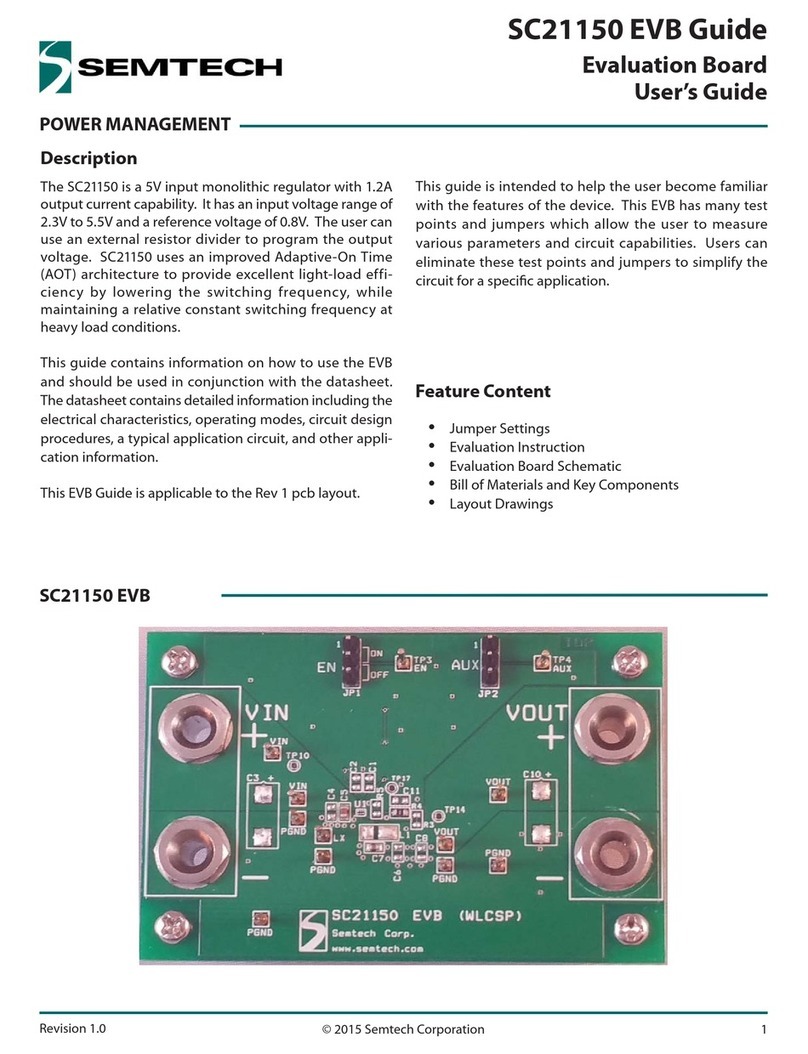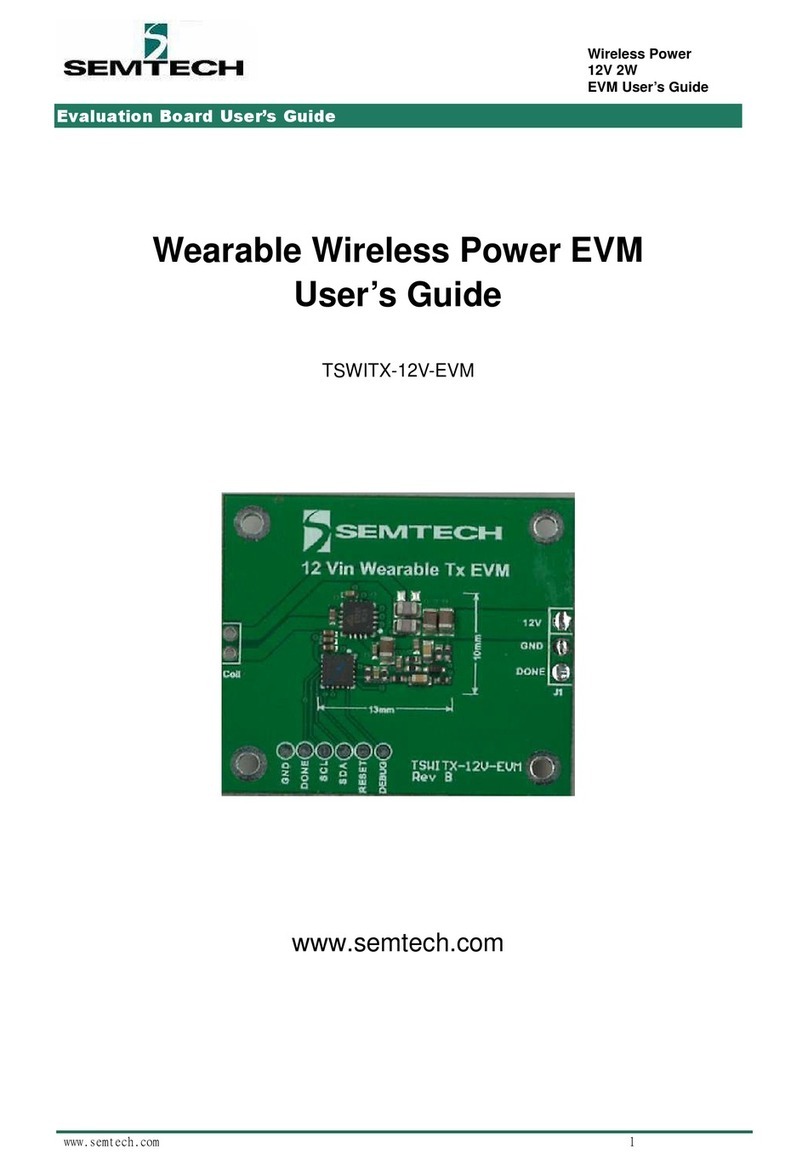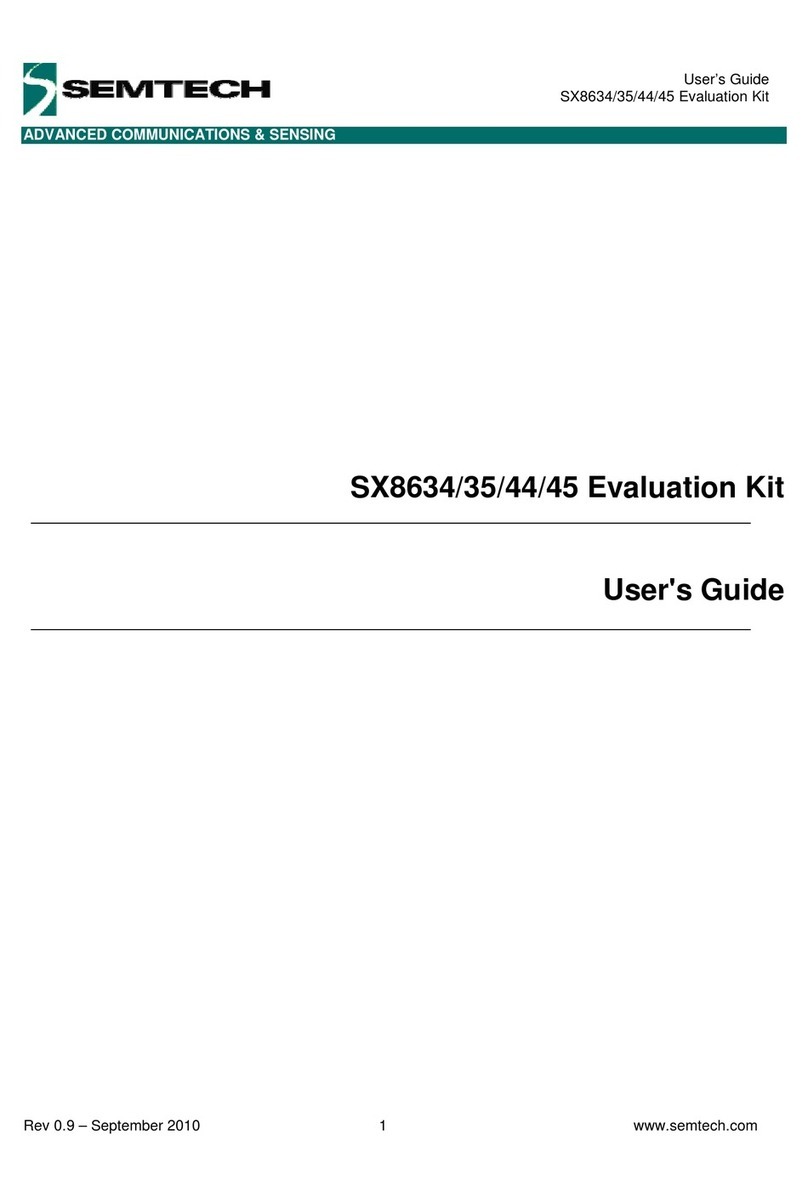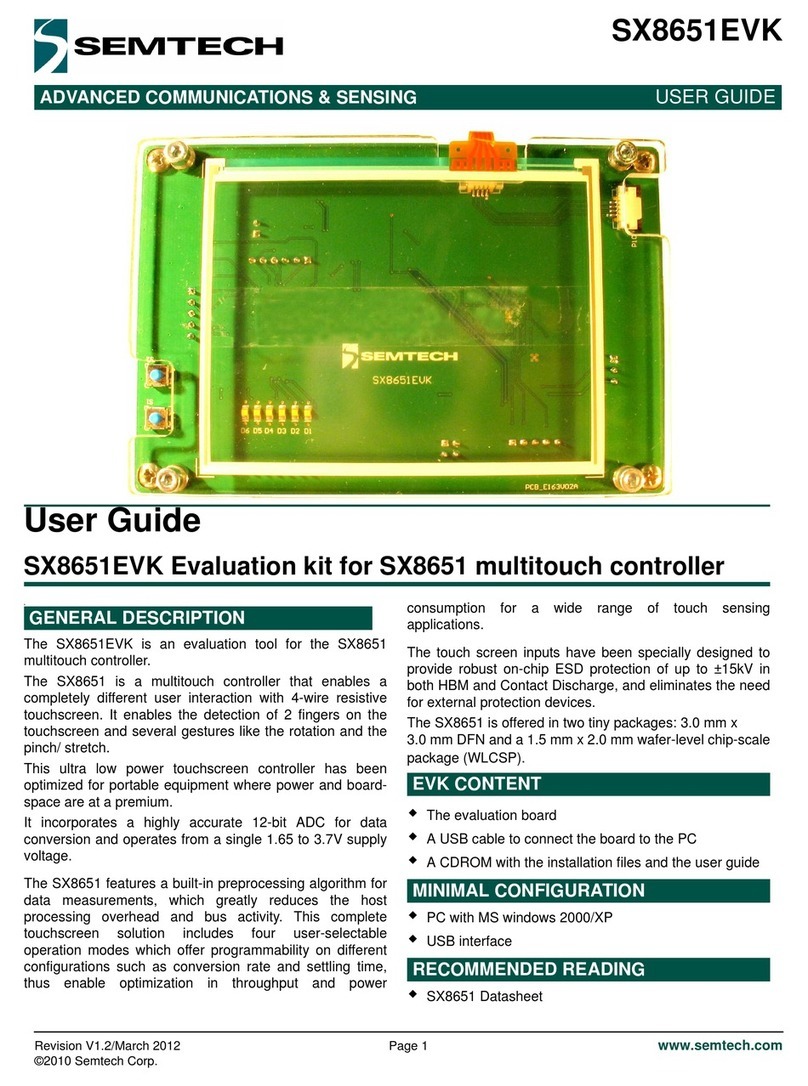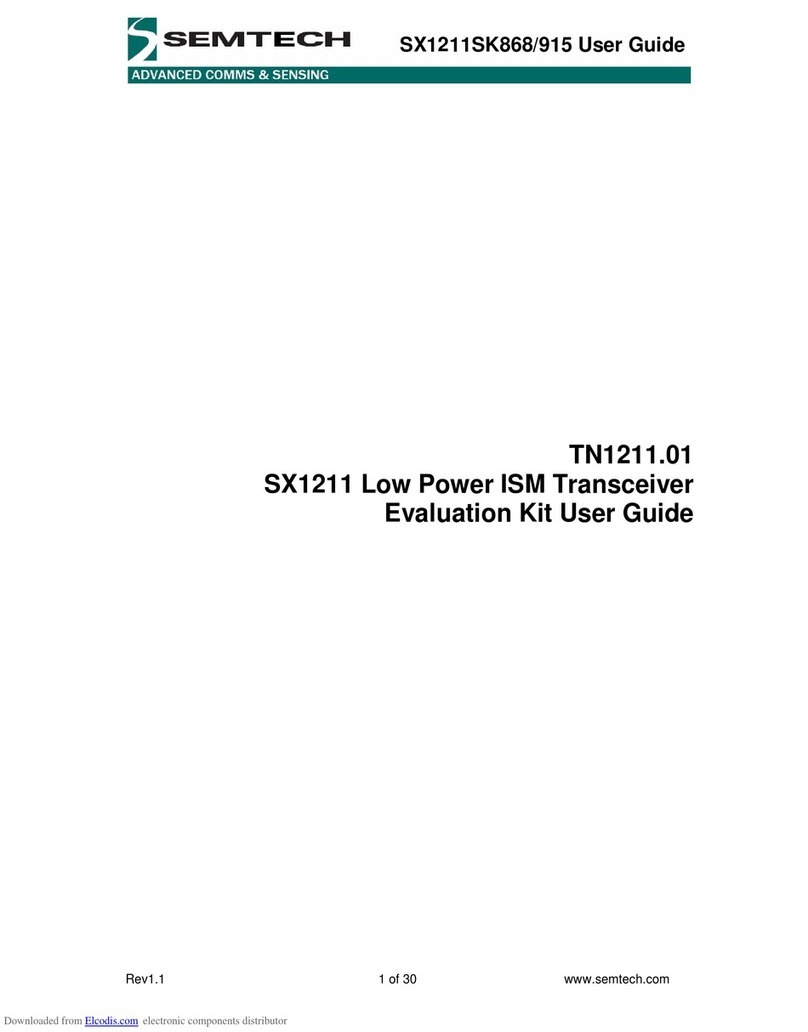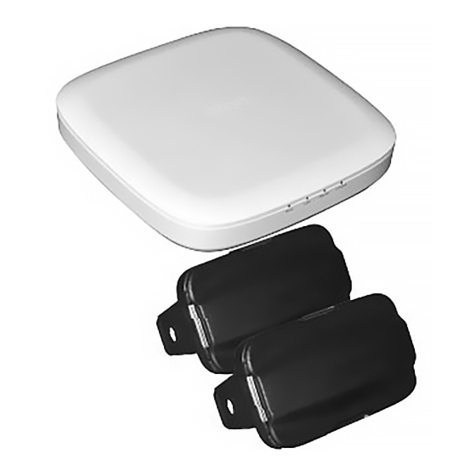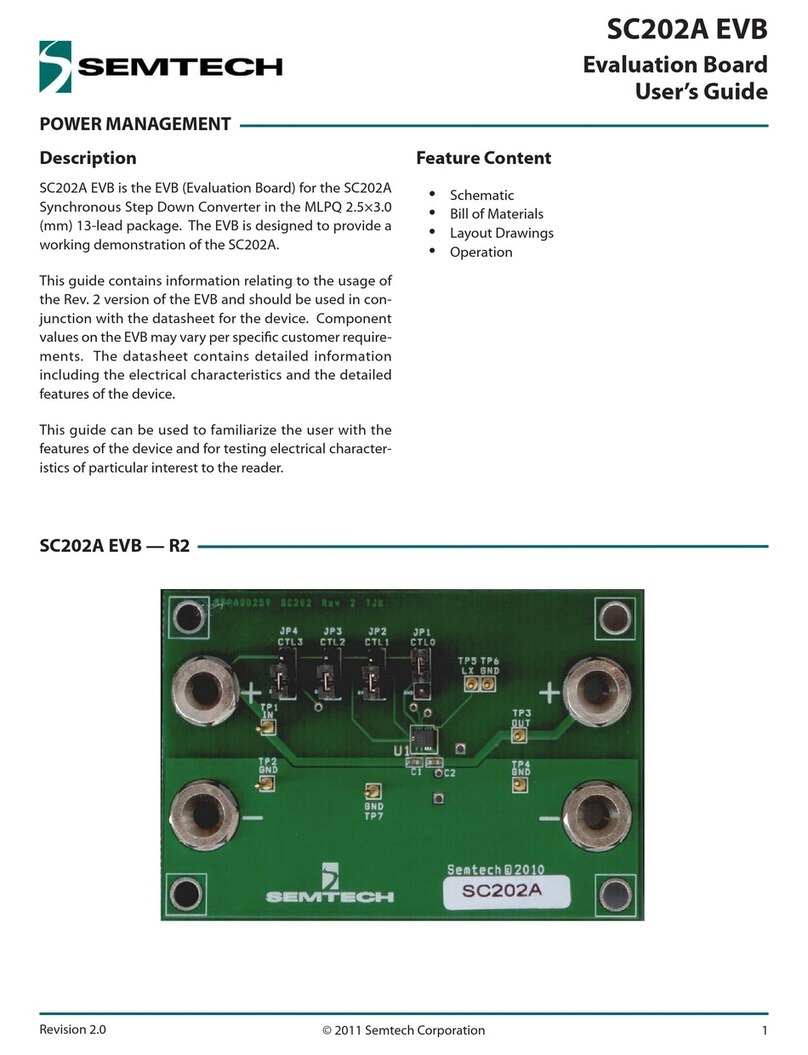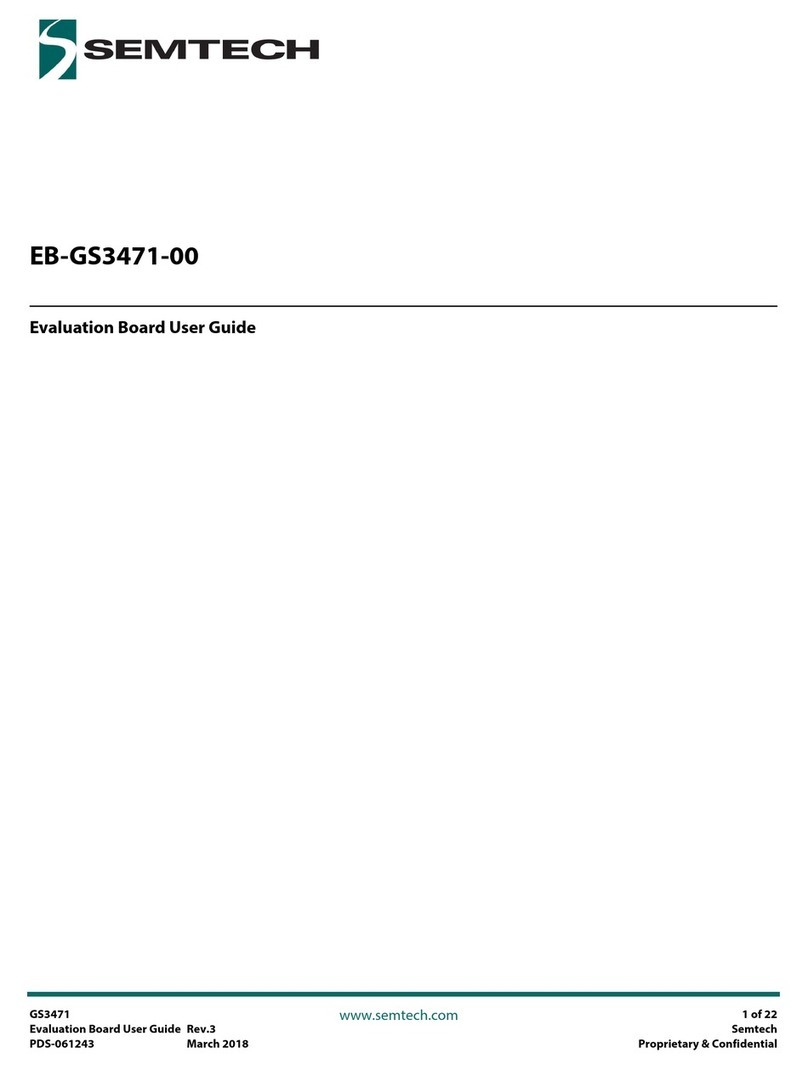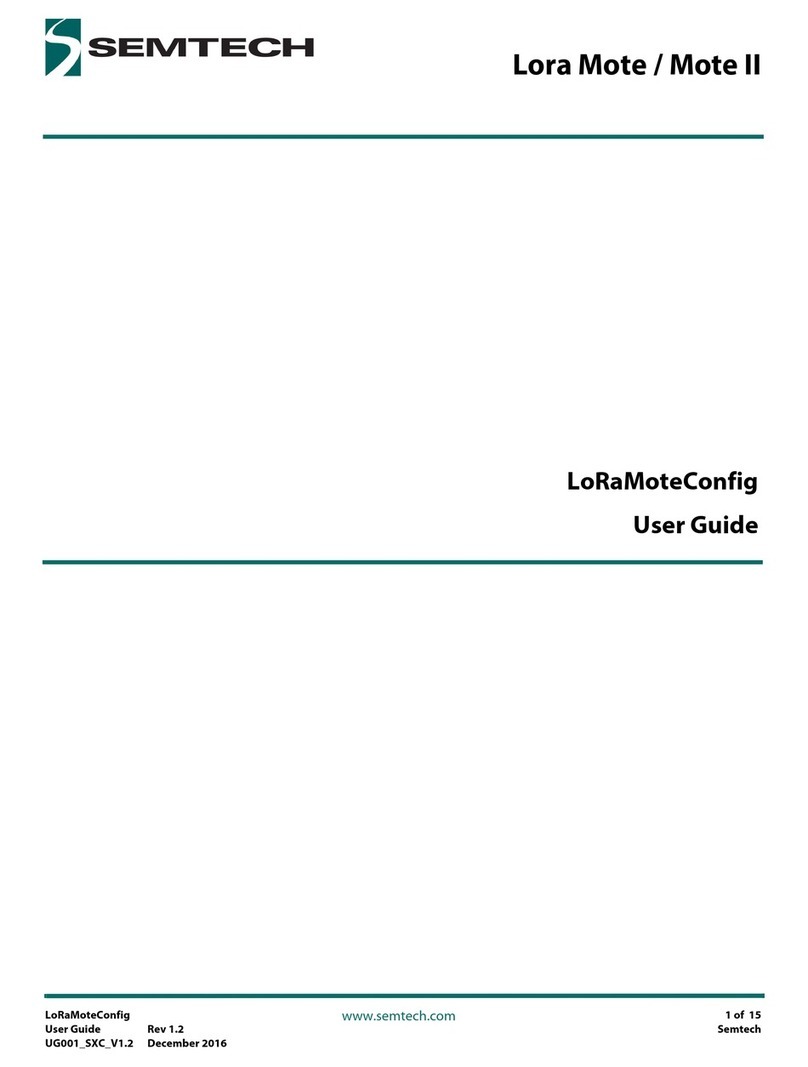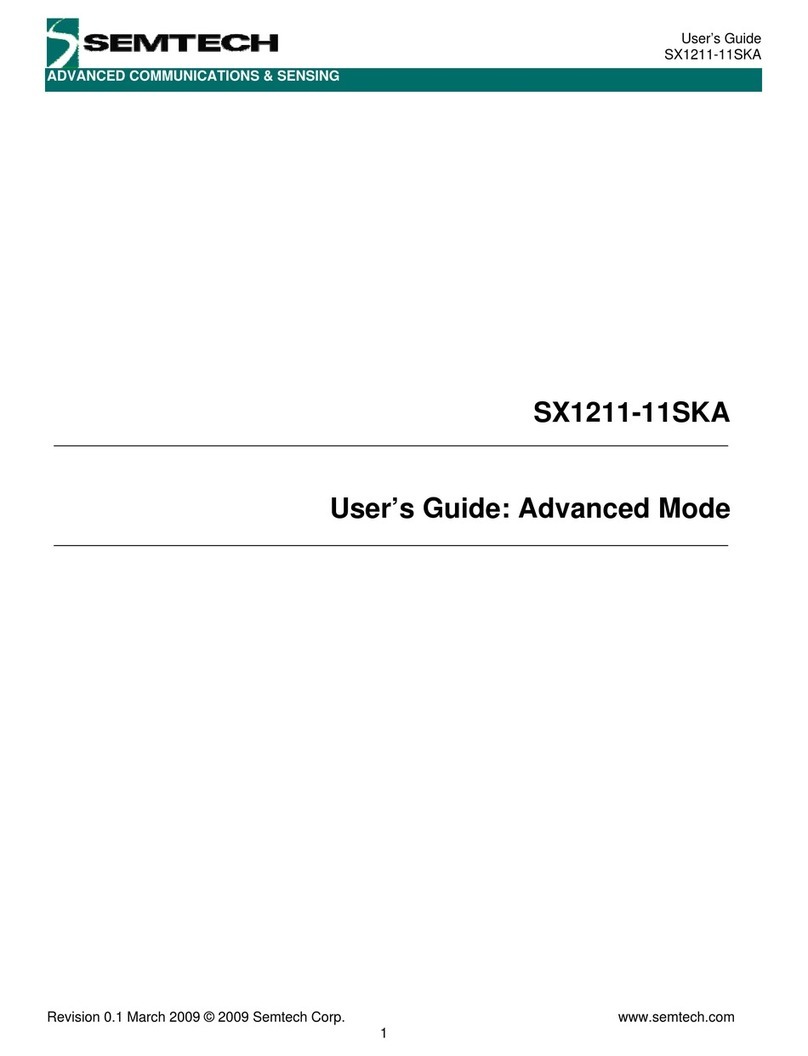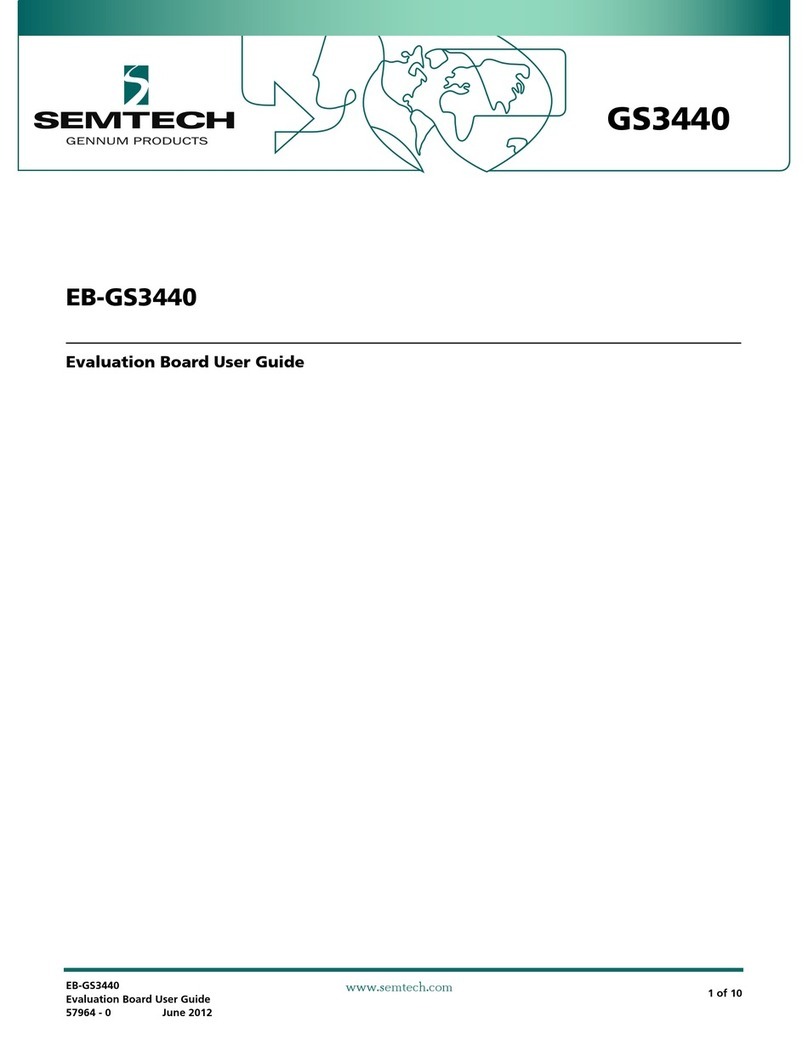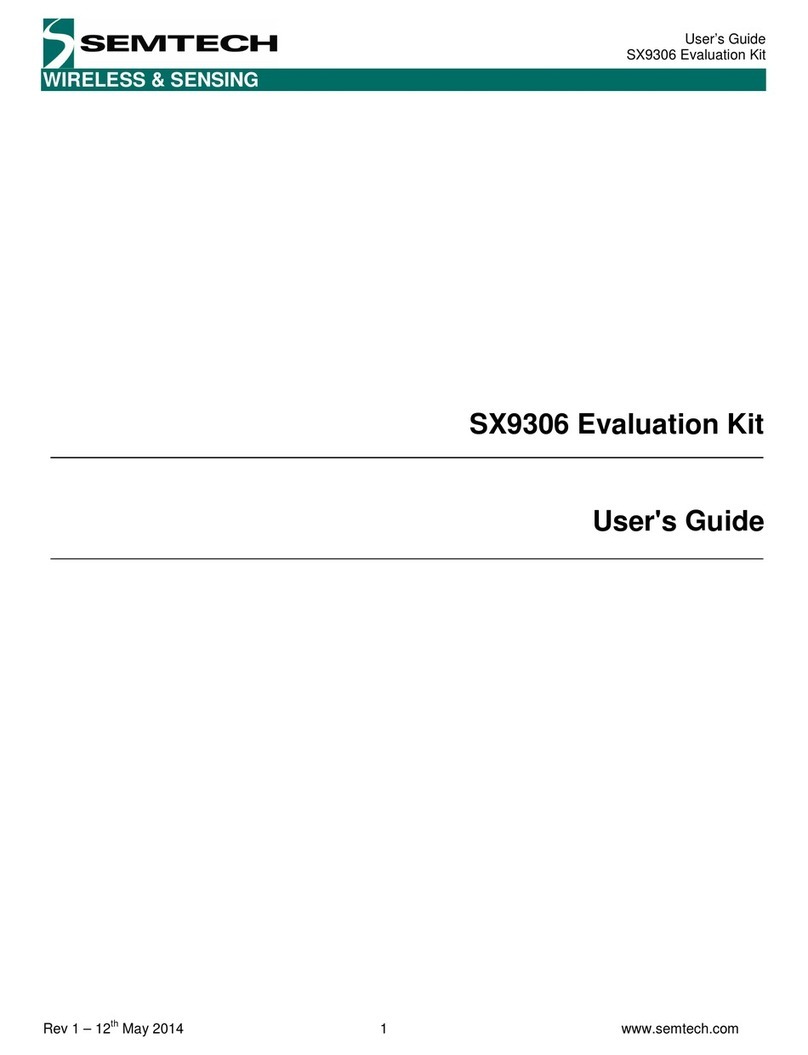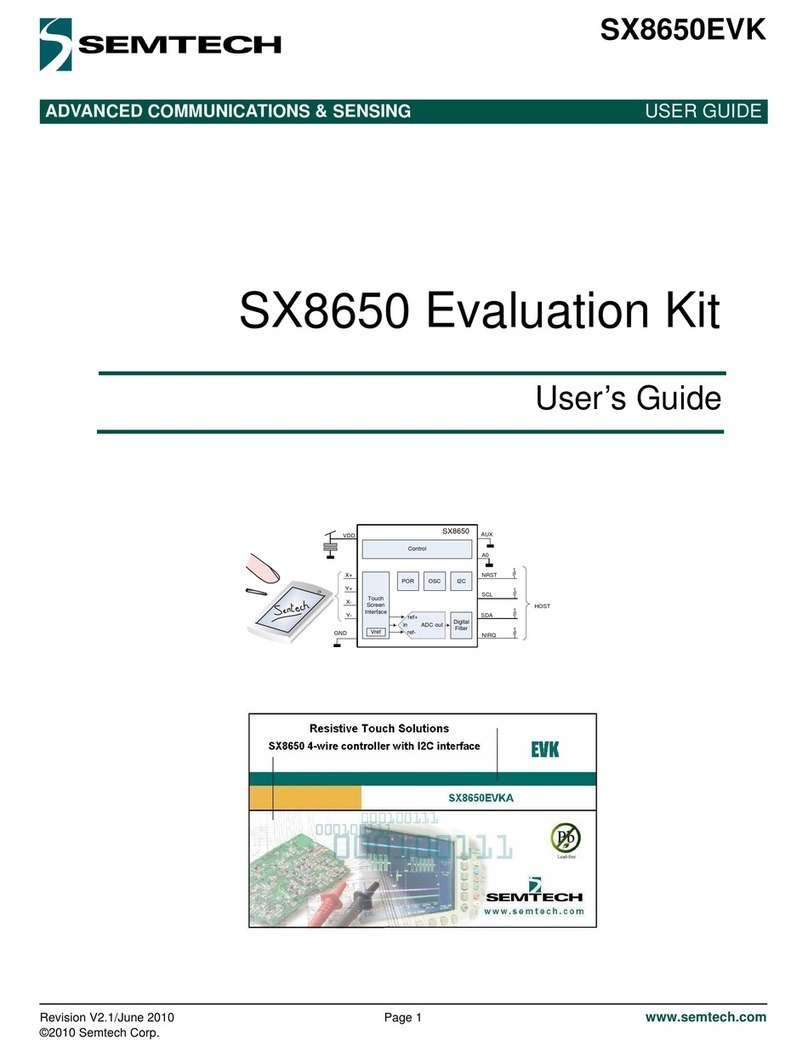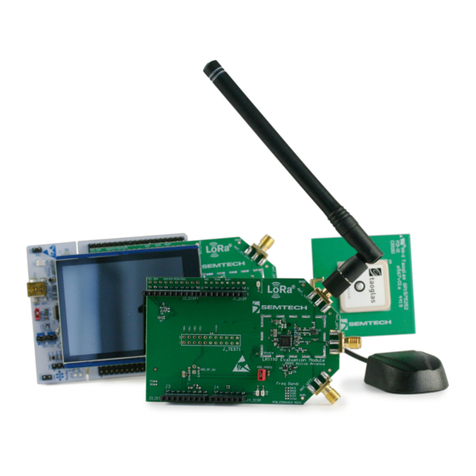
EB-GS2971
Evaluation Board User Guide
52169 - 2 June 2012
6 of 22
Proprietary & Confidential
1.2 SDI Input (J4)
The EB-GS2971 includes a single SDI input.
1.3 Switch Settings (SW2)
A DIP switch (SW2) is populated on the EB-GS2971, with each bit labelled on the
silk-screen. This switch is used to set the operating modes of the GS2971. The signal can
be set HIGH by placing the switch to the ‘1’ position (Closed).
NOTE: Some signals are active LOW, so you will need to switch the bit ‘OFF’ to activate
the signal.
Refer to Table 1-1 below for definitions of each bit.
Table 1-1: SW2 Settings
Bit Name Description
TIM861Connected to the GS2971 TIM_861 pin. Used to select CEA-861 timing mode.
When TIM_861 is HIGH, the device outputs CEA 861 timing signals (HSYNC/VSYNC/DE) instead of H:V:F digital
timing signals.
SMPTE_BYPASSbConnected to the GS2971 SMPTE_BYPASS pin. Used to enable/disable all forms of encoding/decoding,
descrambling, audio and ANCdata detection and extraction and error detection and correction.
When the AUTO/MAN bit in the Host Interface register is HIGH (Default), this pin is an OUTPUT. SMPTE_BYPASS is
HIGH when the device locks to a SMPTE compliant input. SMPTE_BYPASS is LOW under all other conditions.
When the AUTO/MAN bit in the Host Interface register is LOW, this pin is an INPUT. No SMPTE scrambling takes
place, and none of the I/O processing features of the device are available when SMPTE_BYPASS is set LOW.
When SMPTE_BYPASS is set HIGH, the device carries out SMPTE descrambling and I/O processing.
When SMPTE_BYPASS and DVB_ASI are both set LOW, the device operates in Data-Through mode.
DVB_ASIConnected to the GS2971 DVB_ASI pin. Used to enable/disable DVB-ASI data decoding in manual mode.
When the AUTO/MAN bit in the Host Interface is LOW, this pin is an input and when set HIGH the device will
carry out DVB_ASI data extraction and processing. The SMPTE_BYPASS pin must be set LOW.
When SMPTE_BYPASS and DVB_ASI are both set LOW, the device operates in Data-Through mode.
When the AUTO/MAN bit in the Host Interface is HIGH (Default), DVB-ASI input is not supported.
AUDIO_EN/DISbConnected to the GS2971 AUDIO_EN/DISpin. Enables or disables audio extraction.
IOPROC_EN/DISbConnected to the GS2971 IOPROC_EN/DISpin. Used to enable or disable I/O processing features.
When IOPROC_EN/DISis HIGH, the I/O processing features of the device are enabled.
When IOPROC_EN/DISis LOW, the I/O processing features of the device are disabled, and the latency of the
device is LOW. Please refer to the Data Sheet for more information.
20BIT/10BITb Connected to the GS2971 20bit/10bit pin. Used to select the output bus width. (HIGH = 20bit, LOW = 10bit)
SDO_EN/DISbConnected to the GS2971 SDO_EN/DISpin. Used to enable/disable the serial digital output stage.
When the SDO_EN/DISis LOW, the serial digital output signals, SDO and SDO, remain static.
When connected to logic HIGH, the serial digital output signals, SDO and SDO, are enabled.
The SDO and SDO outputs will also be disabled when the RESET pin is LOW.
RC_BYPb Connected to the GS2971 RC_BYP pin. When this pin is LOW, the serial digital output is the buffered version of
the input serial data.
When this pin is HIGH, the serial digital output is the reclocked version of the input serial data.
